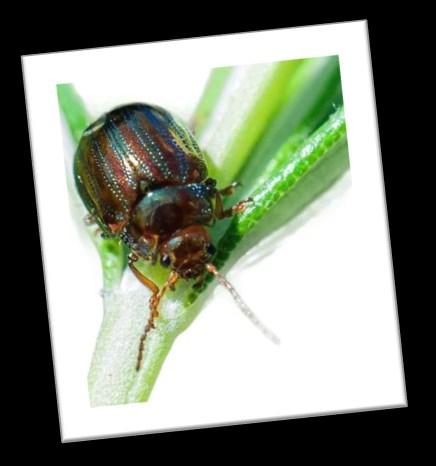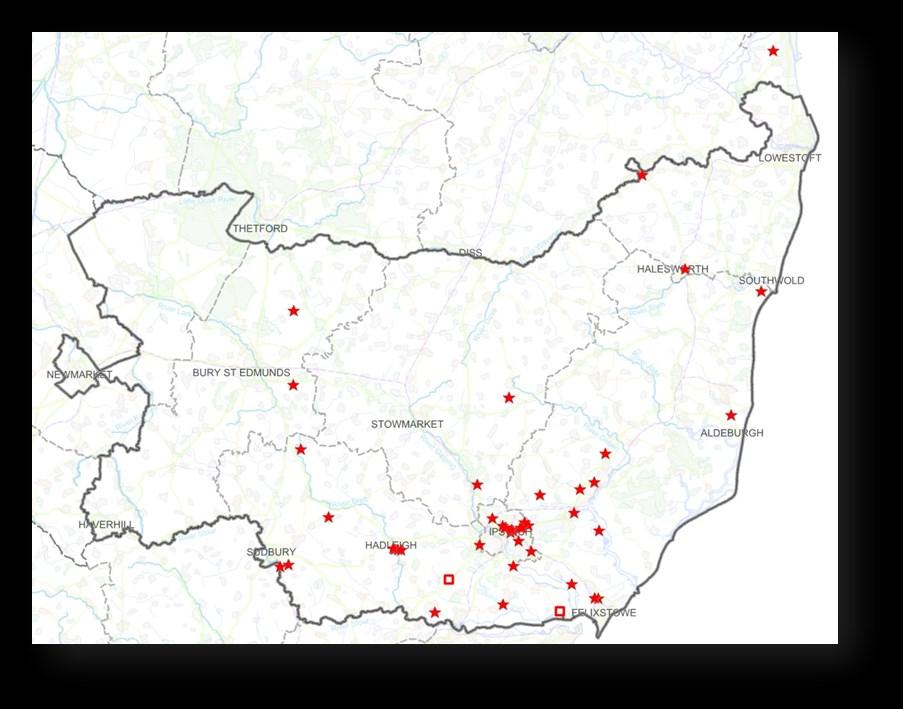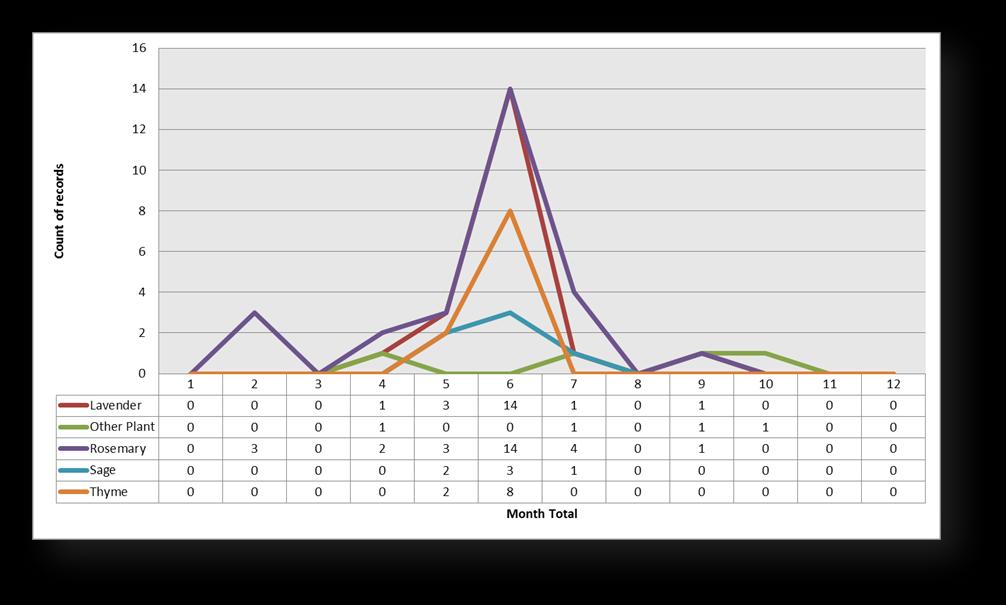
2 minute read
SBIS —Rosemary Leaf Beetle Survey Ben Heather, SBIS
We have now been running the Rosemary Leaf Beetle (Chrysolina Americana) Survey, on our online recording website, for just over a year, so I wanted to publish some of the findings from the survey so far. The survey not only collects the basic biological record information (who, what, where and when) but also gathers information on food plants and first sighting in the year. So far, we have had 48 records submitted throughout Suffolk (and a few further afield) in 2015 and 2016 (see distribution below in Fig.1). The survey is by no means finished and I hope this article also encourages you to visit the survey form and log your sightings from this summer. Anecdotal observations from my garden suggest that the beetles are most active and visible from spring and tend to favour fresh rosemary and lavender growth before moving on to sage plants later on. I have also noticed that there is a short period when they disappear mid-summer before re-appearing again later in the summer/early autumn. The online survey, available at www.suffolkbis.org.uk/rlbsurvey, has been capturing information on the food plants that the beetle was found feeding on. We do not have enough data to draw any definitive conclusions from the survey yet, but we can reveal that so far the beetle, as its name suggests, prefers to feed on rosemary. 40% of records logged rosemary as the plant being fed on, followed by lavender at 30% and sage and thyme at 9% & 15% respectively (see Fig.2). ‘Other plant’ equated to 6% of the records and observation comments revealed that one of the other plants being used was lemon balm (near a rosemary bush).
Photo by Ben Heather
Fig.1. Distribution of records submitted online 2015-16

Fig.3. Record dates split between recorded food plant (including first recorded dates)

The survey records the observation date and asks whether this ‘is your first sighting of the year’ and subsequently asks for this date too (if known). Again we need more records to draw any meaningful conclusions from the data, but it is clear that the beetle, which can be seen most of the year, is most active (and therefore visible) between May and August. However, as more people look out for this beetle we are starting to receive records of both adults and larvae in the colder months of the year (see spike in February - Fig.3). If we can gather some more results from this survey it would be good to see if there are any seasonal differences in feeding behaviour to back up anecdotal observations. If you haven’t yet taken part in the survey or haven’t checked for the presence of these colourful beetles please take the time to check your herb gardens. The survey form is fully open to the public (you do not need an account) and doesn’t take very long to complete. You can find the form at the following address www.suffolkbis.org.uk/rlbsurvey. Please get recording!










